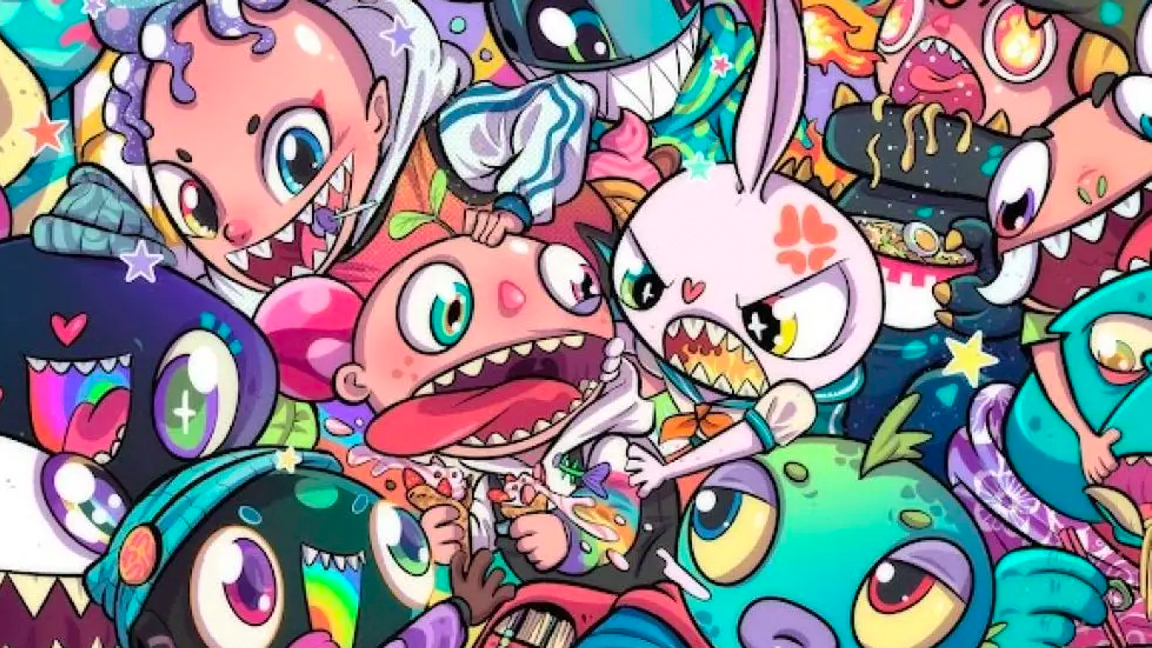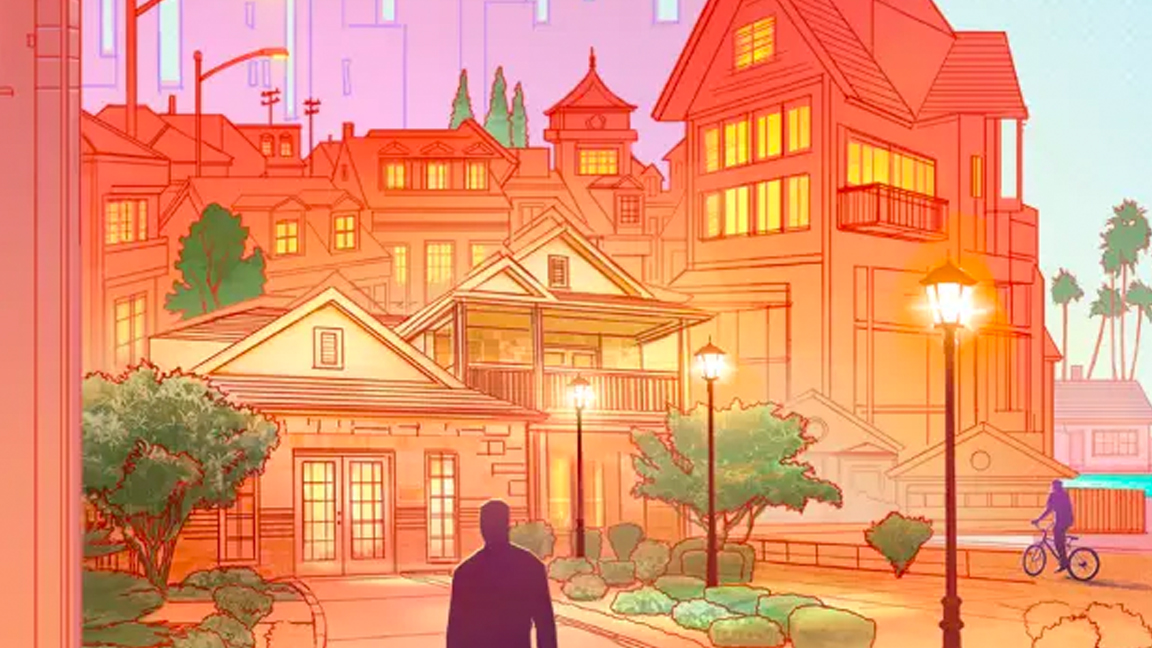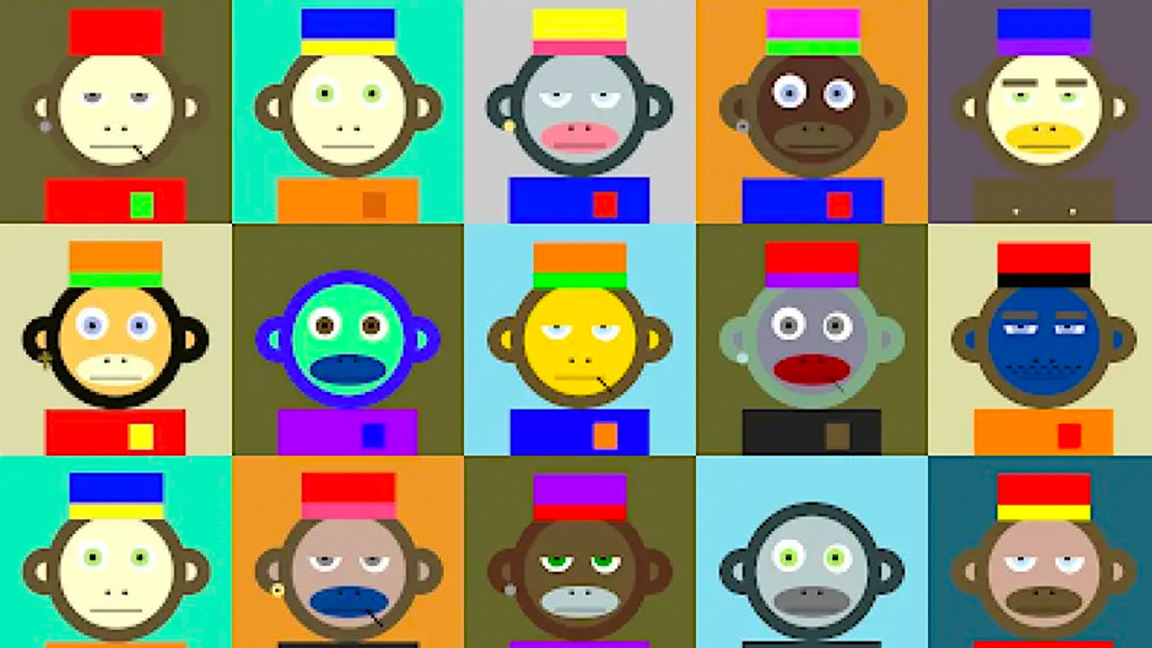
Artists are still releasing NFT collections all the time. This may surprise you, given the NFT 'market' crashed in 2022. But the downturn in NFT trading has left the space open for serious NFT artists and collectors, those who see room for a new kind of digital art and creativity, and there are still some fascinating projects releasing every day.
Contrary to what you may think there's still a high demand for interesting and unique NFT collections and art projects. What is an NFT? Put simply, an NFT is a digital collectible held and sold on the blockchain where authorship is tracked and can't be amended – it creates provenance, and that adds value. While we have a guide to how to make and sell an NFT and even my tutorial to how to create an NFT for free, launching an NFT collection is a bigger task.
So if you have a great idea for a new NFT collection, how should you go about launching it and getting noticed? Matthew Liu, co-founder of Origin Story, has some ideas. Origin Story is unique in the NFT space as it offers the tools you need to launch everything from an NFT marketplace to NFT collections.
Origin Story has helped NFT projects including Karafuru, OnChainMonkey and RoofStock onChain, the world's first real-world property NFT sales platform. Currently Origin Story offers its platform to select clients but the aim is to enable everyone to use it to build bespoke NFT collections, marketplaces, community drops and collaborations. If OpenSea is Amazon, Origin Story seeks to be Shopify.

"OpenSea has taken a stance that is now almost anti-creator and it's not very friendly. In terms of economics, all entities are treated as one size fits all, everything kind of looks the same, just like an Amazon product page," says Liu in our sit-down interview. "We're taking more of a Shopify model, and when you think about Shopify, in the e-commerce world, it's allowed millions of different e-commerce purchases to come online and have these more customised, branded experiences and direct relationships with their customers."
Origin Story aims to open its platform of tools to everyone this summer, and will enable users to create branded marketplaces and use a variety of models, including offering subscriptions, as well as engagement tools. The point being, if you've looked on and wanted to create an NFT collection with all the bells and whistles of a major release from Beeple or Pudgy Penguins, then Liu is planning the platform and tools to make this happen.
We're on the verge of the next step in NFT art – "we're in the building phase," says Lui" – and the broad Amazon-like approach of the best NFT marketplaces will likely be replaced, or at least complimented by, creator-focused platforms offering an 'Etsy for NFT creators' approach. But what do you need to know if you're planning an NFT collection launch? Liu has some advice.
7 tips for launching an NFT collection

01. Know your project
It may seem obvious, but before you begin you need to know your aims and what your project is. Lui tells me: "I think the first thing to do is to identify why you're releasing your NFT. Is it a digital art NFT?
It's worth considering a theme that's both on-trend and timeless. Think about what's hot in the art world right now, and then choose something completely different. Just kidding, sort of. While it's important to consider current trends when launching your NFT art collection, it's also vital to choose a theme that has some staying power. This way, your NFT collection will still be relevant and valuable long after the hype dies down.
Lui says ask yourself, "Is art the real utility or is your NFT meant to serve some other fundamental purpose? Like is it a ticket or is it something for gaming?"
02. Don't be shy
"If you are a pure artist, the thing to really think about is how do you build community and how do you get people to follow you? This is a multi pronged strategy," says Lui, who advises not to be shy but get out there and promote yourself. "First, get your work out there. Just like when you're trying to build any type of audience it's about getting seen and not being too shy. Put work out consistently and show you're in NFTs for the long term."
Launching an NFT art collection requires some serious marketing skills. Think about who your target audience is and how you can reach them. Use social media, email marketing, and other tactics to get the word out. As Lui tells me, "There's an art to selling art, so to speak".
03. Build your community
As an NFT artist you need to be a part of the community to get noticed, and two key channels need to be used, says Lui: "Get on Twitter and Discord, these are channels that NFT collectors and artists use. Make sure you have a Twitter [account] and make sure you have a Discord [account] for your team members."
Launching an NFT art collection takes time, effort, and patience. Don't get discouraged if things don't take off right away. Keep creating, keep talking, and keep refining your approach. Eventually, your hard work will pay off, and even if it doesn't you'll have made new friends and been inspired to create.
Fundamentally, Lui advises: "Start engaging; engaging with other artists and see if they want to create collaborative works or if they want to showcase their art next to yours; participate in the community."
04. Support other artists
Don't exist in a bubble but be a participant of the NFT world, says Lui. "One great way to get started is to take a little bit of money and just support other artists and buy some of their artworks. Be seen as a collector and an artist. You don't have to spend a lot but be seen that you're committed to the space and supporting the overall state, and then you're likely to get back more than what you put out."
This can also help you in setting realistic prices. It can be tempting to set your NFT prices sky-high, but keep in mind that there's a lot of competition out there. Supporting other artists also enables you to see what similar NFTs are selling for, how you felt about those prices, and price yours accordingly.
05. Meet people and get involved
Lui explains some collectors can enhance your credibility: "There are some celebrity collectors out there. If they collect your work, then that's the stamp of approval. if you get that, then all of a sudden, your words are valued much more highly by everyone else. I think it's important to do a little bit of one-on-one interaction, whether that's online, or visit NFT galleries or conferences; get to know the important people in the space."
But this all comes back to how the NFT supports new artists: "One thing that's quite unique about the NFT community right now is how everyone's quite supportive. A lot of these top collectors and influencers are trying to grow the space and trying to help everyone out and they're willing to spend their money to support creators. So it's really a golden opportunity."
06. Think creatively about your NFT collection
"I think people are definitely rewarding both creative art as well as potentially creative mechanics," says Lui. "So you need to take a little bit of ownership of saying, "hey, how do I think about everything holistically and not just what are the visuals?" We've seen some interesting mechanics where artists are producing multiple pieces of art but to get this new collection you need to already be holding something in their previous collection."
Lui explains some further examples: "You could actually need to burn an NFT, almost like sacrificing it, for the right to get an upgraded, new artwork. There's even some like gamification for pure artists to get their community excited through the health of the NFT; collectors care about art, but they also care about whether what they're purchasing will appreciate or depreciate, so if you create the right environment for that, you can increase demand for your work over time."
07. Don't give up, see the bigger picture
Launching an NFT art collection takes time, effort, and patience. Don't get discouraged if things don't take off right away. Keep creating, keep marketing, and keep refining your approach. Lui explains how seeing the bigger picture of where this is going will help when things feel daunting.
"Just don't give up. It's still so early right now, but overall the NFT market is going to grow 1,000 times bigger in the next five to 10 years. So if you're early right now, and you're trying to stand out."
Lui adds a little perspective: "There aren't millions of NFT artists. Today, there are a few 1,000 good ones, and so fight to be with those 1,000, and then as the overall market grows in the next few years – it can be a very, very powerful movement – the number of people that will care about you, will know about you, and will want to collect your art NFTs will grow. And of course, that brings the financial benefits as well."







